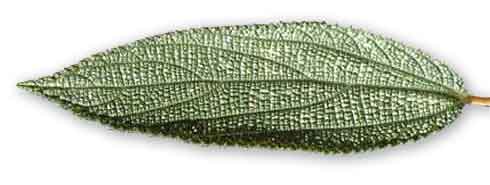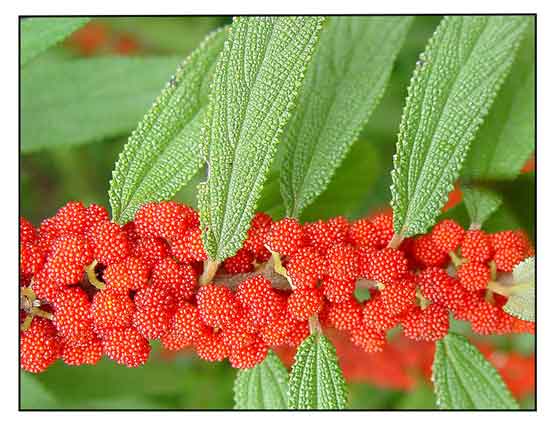
Family • Urticaceae
Ngamey
Debregeasia longifolia (Burm.f.) Wedd.
ORANGE WILD RHEA
Chang ye shui ma
| Scientific names | Common names |
| Boehmeria angustata Hassk. | Ngamey (Philippines) |
| Boehmeria dichotoma (Blume) Hassk. | Orange wild rhea (Engl.) |
| Conocephalus niveus Woght | Wild rhea (Engl.) |
| Debregeasia angustifolia C.B.Rob. | |
| Debregeasia dichotoma (Blume) Wedd. | |
| Debregeasia libera J.J.Chien & C.J.Chen | |
| Debregeasia longifolia (Burm.f.) Wedd. | |
| Debregeasia longifolia var. affinis (Miq.) J.J.Sm. | |
| Debregeasia longifolia var. monticola Hochr. | |
| Debregeasia luteocarpa Elmer | |
| Debregeasia velutina Gaudich. | |
| Leucocnide affinis Miq. | |
| Leucocnide angustata Miq. ex Blume | |
| Leucocnide dichotoma (Blume) Miq. | |
| Leucocnide sororia Miq. | |
| Missiessya velutina (Gaudich.) Wedd. | |
| Morocarpus affinis Blume | |
| Morocarpus affinis var. robustus Blume | |
| Morocarpus angustatus Blume ex Zoll. | |
| Morocarpus dichotomus (Blume) Blume | |
| Morocarpus dichotomus var. ochraceus Blume | |
| Morocarpus longifolius Blume | |
| Morocarpus lutescens Blume ex Zoll. | |
| Morocarpus sororius Miq. | |
| Morocarpus velutinus Blume | |
| Morocarpus virens Blume | |
| Urtica angustata Blume | |
| Urtica dichotoma Blume | |
| Urtica muricata B.Heyne ex Wall. | |
| Urtica verrucosa Moon | |
| Debregeasia longifolia (Burm.f.) Wedd. is an accepted species. KEW: Plants of the World Online | |
| Other vernacular names |
| CHINA: Chang ye shui ma. |
| HINDI: Sansaru, Tusara. |
| INDONESIA: Dara manuk. |
| IRULA: Manalie chedi. |
| MALAYALAM: Kattunochi, Narambili, Neeranji, Njandumutta, Poonoolmaram, Pulichi. |
| MISHING: Bayo esing, Dalah esing. |
| TAMIL: Kaatu nochchi, Katunochchi. Kattu-mayilai. |
| TIBET: Rang-shing. |
Properties Studies Availability |
December 2023
![]()
 |
| PHOTOS / ILLUSTRATIONS |
| IMAGE SOURCE: Debregeasia longifolia / Ewen Cameron / Collection: Auckland War Memorial Tamaki Paenga Hira / Creative Commons Attribution 4.0 International / click on image or link to go to source page / Wikimedia Commons |
| OTHER IMAGE SOURCE: Debregeasia longifolia / Ewen Cameron / Close-up leaves and fruits / Creative Commons Attribution 4.0 International / click on image or link to go to source page / Wikimedia Commons |
Additional
Sources and Suggested Readings |
• |
DOI: It is not uncommon for links on studies/sources to change. Copying and pasting the information on the search window or using the DOI (if available) will often redirect to the new link page. (Citing and Using a (DOI) Digital Object Identifier) |
| List of Understudied Philippine Medicinal Plants |
| New plant names needed The compilation now numbers over 1,300 medicinal plants. While I believe there are hundreds more that can be added to the collection, they are becoming more difficult to find. If you have a plant to suggest for inclusion, native or introduced, please email the info: scientific name (most helpful), local plant name (if known), any known folkloric medicinal use, and, if possible, a photo. Your help will be greatly appreciated. |
• |
 |


 Distribution
Distribution
